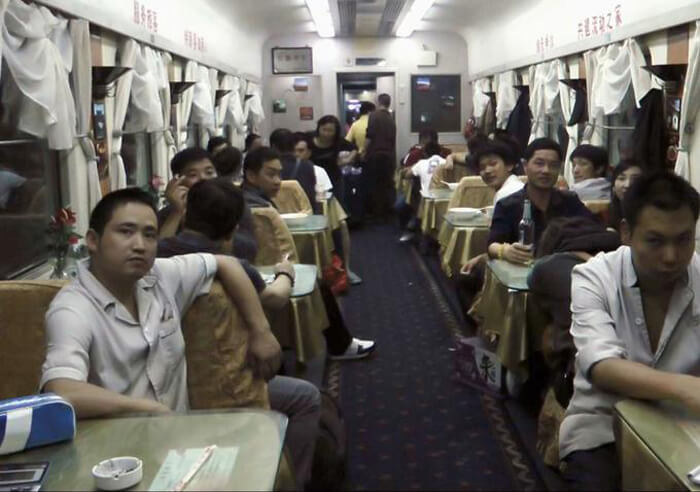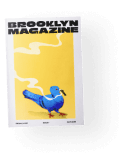China By Train in the Immersive The Iron Ministry
The Iron Ministry
Directed by J. P. Sniadecki
August 21-27 at MoMA
The Iron Ministry begins in darkness but not in silence. The black screen is accompanied by the sounds of industrial clanking. Gradually, we realize that we’re looking at the outside of a train as director J. P. Sniadecki’s camera movements caress it. His strategy recalls the opening of Leviathan, and indeed Sniaedcki is a graduate of Harvard’s now-famous Sensory Ethnography Lab. However, if the approach of the Lab’s films—and Leviathan in particular—can be described as “post-humanist,” The Iron Ministry takes the “post” out. It’s curious about people in a way that’s frankly old-fashioned.
Sniadecki’s film was shot onboard Chinese trains from 2011-2013. (One conversation he caught refers to Osama bin Laden as a living presence.) Its editing sometimes attempts to be seamless; at other times, it’s jagged and jarring. For instance, Sniadecki cuts abruptly from a group of young men listening to music and looking out a train’s window to another man silently looking out another train’s window. He interviews a few people—in fluent Mandarin, although he’s American—and captures a few more interesting conversations.
At times, The Iron Ministry evokes Frederick Wiseman, particularly in its mix of talk and observation of actions like a snack seller moving through a train. Sniadecki sometimes seems to set conversations in motion, but they take on a life of their own. Many are politically charged; even those that aren’t, such as a discussion of the state of being Muslim in China, are revealing. (In it, one man says “our hope is that everyone can get along…above all, China likes peace.”) The Iron Ministry reveals a lot about China as an environment too—simultaneously, almost everyone seems to smoke cigarettes while wind turbines pump away outside. It reminds one of what it was like to ride Amtrak twenty years ago, when the company routinely over-booked trains and still allowed smoking. The film feels like a new kind of hybrid documentary, mixing abstraction and cinéma vérité.
You might also like 




















